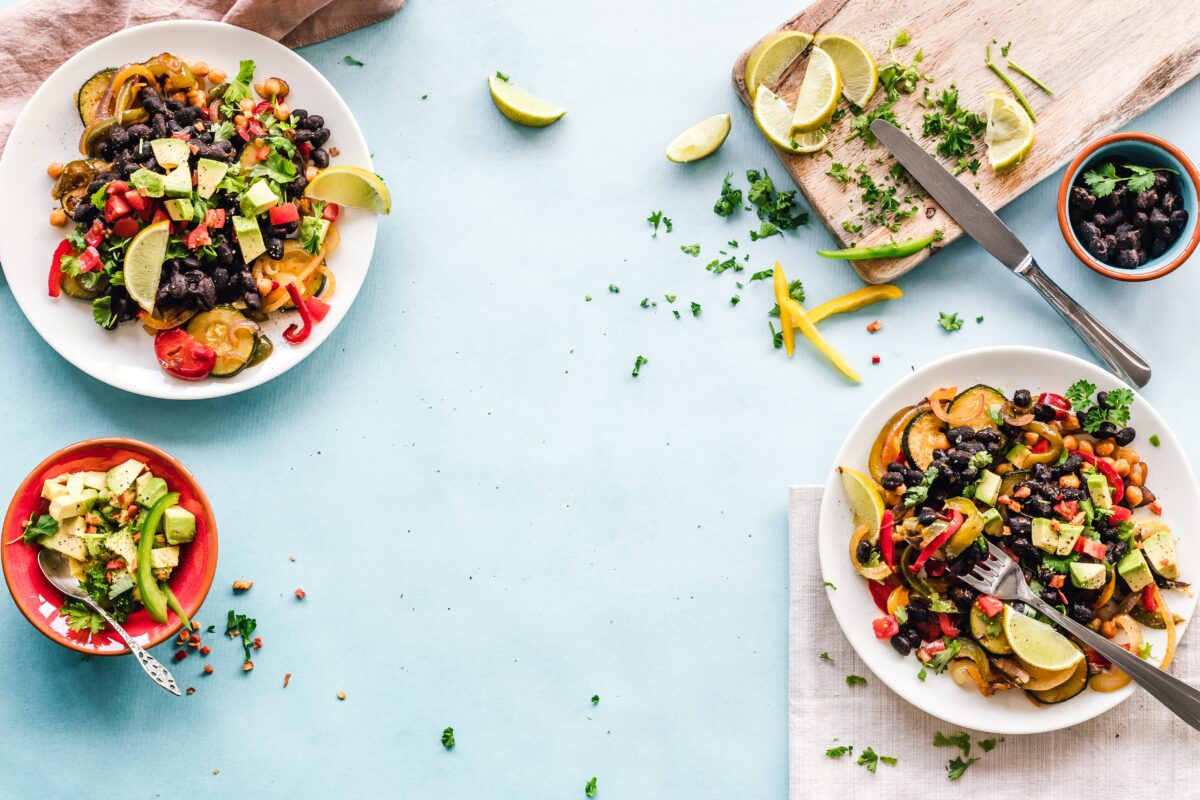You’ve likely been told plenty of times throughout life to “eat your fruits and vegetables”, we know we’re supposed to because it’s healthy, but have you ever wondered why fruits and vegetables are so colorful and what that means for health? Did you ever hear your grandmother say something like “you need some more color on your plate? She was on to something – there are several reasons why you should consume each color of the rainbow every day.
The phytonutrients which make up plants are what give them their colors. Phytonutrients are the active constituents of foods that elicit specific effects in the body. These are what allow foods and herbal supplements to have such strong therapeutic effects on health.
The beauty of eating a wholesome, colorful diet, is that it may reduce the need for some multivitamin and mineral supplements or additional stand-alone supplements that are commonly used.
For many nutrients, it’s better to get them from your diet and in supplement form, it can save a lot of money, and our bodies actually prefer to get these nutrients from whole food sources. It’s done so for thousands of years, plus there could be many additional benefits we miss out on when we take a nutrient that’s been isolated from all of the other nutrients in the whole food. Many compounds work together to create a synergistic effect on health.
Don’t get me wrong, I love supplements, they have helped countless people improve many areas of health. However, I do believe that supplements should be just as their name implies – supplemental. If we are not getting these essential nutrients from our diet, supplements are essential for maintaining health. Much of our food is depleted of micronutrients and our food culture has changed so much that some things do require supplementation, but there is still much we can gain from our diets.
Read more on Micronutrients, Phytonutrients, and so-called ‘Anti-nutrients’
Different colors of foods can enhance and support specific organ systems and offer energetic effects on a molecular level. Let’s dive into the importance and beneficial effects of each color and why you should ensure you include it in your daily diet.
You should be able to actually taste the color of your foods, most colors have a unique flavor. Can you taste the sweet, nutty flavor of yellow bell pepper or the mild, buttery flavor of beta-carotene in orange foods? If you can’t “taste” the colors, it’s likely that your tastebuds have been desensitized by ultra-processed foods and are no longer able to recognize the phytonutrients. This happens when too many synthetic vitamins, food additives, chemicals, and sugars are consumed. The good news is that this sense can always be restored making whole foods taste better than you thought possible.

Green Foods
Green is likely the most commonly consumed color of fruits and vegetables and while it offers several benefits, one of the best things that dark, leafy, greens do for you is support heart and liver health. Chlorophyll is what makes plants green, these are the energy source for plants, similar to our mitochondria – they’re packed with nutrients needed to make ATP. Greens are a great source of vitamins and minerals especially vitamin K, A, many B vitamins, and several essential minerals like magnesium. Greens also help to maintain an alkaline environment within the body. They support circulation by ensuring adequate blood flow and keeping the artery walls strong and clean. Greens also support liver and gut cleansing and detoxification
Purple and Blue Foods:
Purple and blue plants get their rich, deep colors from a phytonutrient called anthocyanin. This compound is beneficial for brain and central nervous system health. It passed the blood-brain barrier to increase antioxidant activity in the central nervous system which reduces inflammation and damage caused by free radicals and oxidative stress. It enhances cognition and protects nerve cells from DNA damage and protects memory. Studies have shown that blueberries can significantly improve memory function and slow cognitive decline. Purple and blue foods are also rich in vitamin C, vitamin B6, and resveratrol. Dark berries like blueberries and blackberries offer support to your microbiome by preventing the overgrowth of bad bacteria, feeding good microbes, and may reduce H. pylori bacteria.


Yellow Foods:
Yellow supports digestion. Have you ever heard someone suggest ginger for an upset stomach or that bromelain from pineapple is good for digestion? This is because yellow fruits and vegetables have several different constituents that give them their color and benefits. Curcumin is a major one found in turmeric and is one of the most versatile herbs consumed today. It is highly soothing for the gastrointestinal tract and promotes gut healing. Bio-flavinoids are also abundant which helps to make vitamin C more bioavailable, another compound that these vibrant foods are also loaded with. They’re also high in potassium. Yellow foods also provide several other vitamins as well as powerful antioxidants and minerals.
Orange Foods:
You’ve likely heard that orange fruits and vegetables are a great source of vitamin A, this is because of this vitamin’s precursors, beta-carotene and carotenoids which give these plants their luminous orange colors. Not many people are actually able to convert these compounds to vitamin A though, so it’s likely that other compounds like xanthine support eye health. Orange supports the reproductive systems and the hormones that go along with them including testosterone and estrogens. Orange fruits and vegetables offer vitamins C which regulates the immune system and autoimmunity and are necessary compounds for hormone production. These antioxidant-rich foods help to maintain the health of the mitochondria which are also essential for hormone production by all cells, especially the thyroid and sex hormones which boost metabolism.


Red Foods:
Red foods get their hues from lycopene, quercetin, and beta-carotene. These foods have a very strong impact on immune health. Quercetin is commonly used as a natural therapy for managing cardiovascular diseases and lycopene is another powerful compound that supports heart health and the immune system. It’s also protective of prostate health as well. A high intake of red foods and lycopene is linked to a reduced risk of prostate cancer. A healthy cardiovascular system is essential for health and well-being. Your entire body relies on the circulation of blood for supplying oxygen and delivering essential nutrients to every cell, organ, and tissue. Red foods help boost cardiovascular function and support the kidneys as well which have a managing role over things like blood pressure and blood health.
White and Brown Foods:
We’re often told that bland fruits and vegetables are colorless because they’re void of nutrients and are just unnecessary carbs in our diet, but this couldn’t be further from the truth. White, beige, and brown foods offer an abundance of health benefits and are filled with numerous phytonutrients. White foods aid in detoxification and purification because they’re also high in fiber; fresh raw garlic contains allicin which supports the immune system, and potatoes are rich in potassium (but you must eat the skin). Others like cauliflower and onion contain sulforaphane, organosulfur, and glucosinolates which upregulate phases 1 and 2 detoxification. Beans legumes, nuts, and grains are often brown and are mostly fiber which aids in the removal of toxins and waste while providing several essential minerals.

Additional Benefits of a Rich, Vibrant Diet:
In addition to offering enhanced support to individual organ systems, these brightly colored foods also offer full systemic support to the body. They reduce reactive oxygen species, prevent oxidative stress, and modulate and enhance immune function to help keep you well. They also work to prevent toxins from building up in your body and maintain alkalinity and proper blood flow by keeping your arteries clean and reducing the build-up of arterial plaque.
Another great way to add “color” to your foods is by the use of spices. This offers several benefits including additional hues from phytonutrients and adding vibrant flavors to meals. Spices have several therapeutic benefits that have been used for thousands of years, both medicinally and in cooking. Adding spices like turmeric, chili powder, oregano, basil, cinnamon, and others will please both your taste buds and your whole body.

Having rich, flavorful meals also helps prevent overeating. The flavonoids in spices and natural foods excite your taste buds which communicate with your brain that you’re getting the nutrients your body craves. This helps optimize satiety hormones (what makes you feel full) which tell you to stop eating before you’ve over-indulged.
The reason we don’t have this response to processed foods is because food companies spend billions researching ways to ‘flavor’ foods in such a way that they don’t set off these brain signals around hunger and satiety. They flavor foods just enough to make you want to keep eating, but since they do not meet the “flavor threshold” you’re brain doesn’t think you’re getting anything that’s actually nutritious. This is why it’s so easy to down an entire bag of chips in one sitting, it’s also how taste buds become desensitized to healthful foods.
It’s easy to ensure you’re getting each color in your meals daily. Next time you’re at the grocery store, try to grab at least 1-2 fruits and vegetables of each color. Versatile ones that can be used in several different meals are great (like bell peppers, mixed field greens, onion, grains, and blueberries), try to eat one of each color daily.
My favorite way to ensure that I eat each color is by making a “rainbow salad” for lunch with these foods as the toppings. Remember, if you’re not eating a specific color food, you’re missing out on those key phytonutrients.
Here are some excellent printouts that can make this easy and fun:














